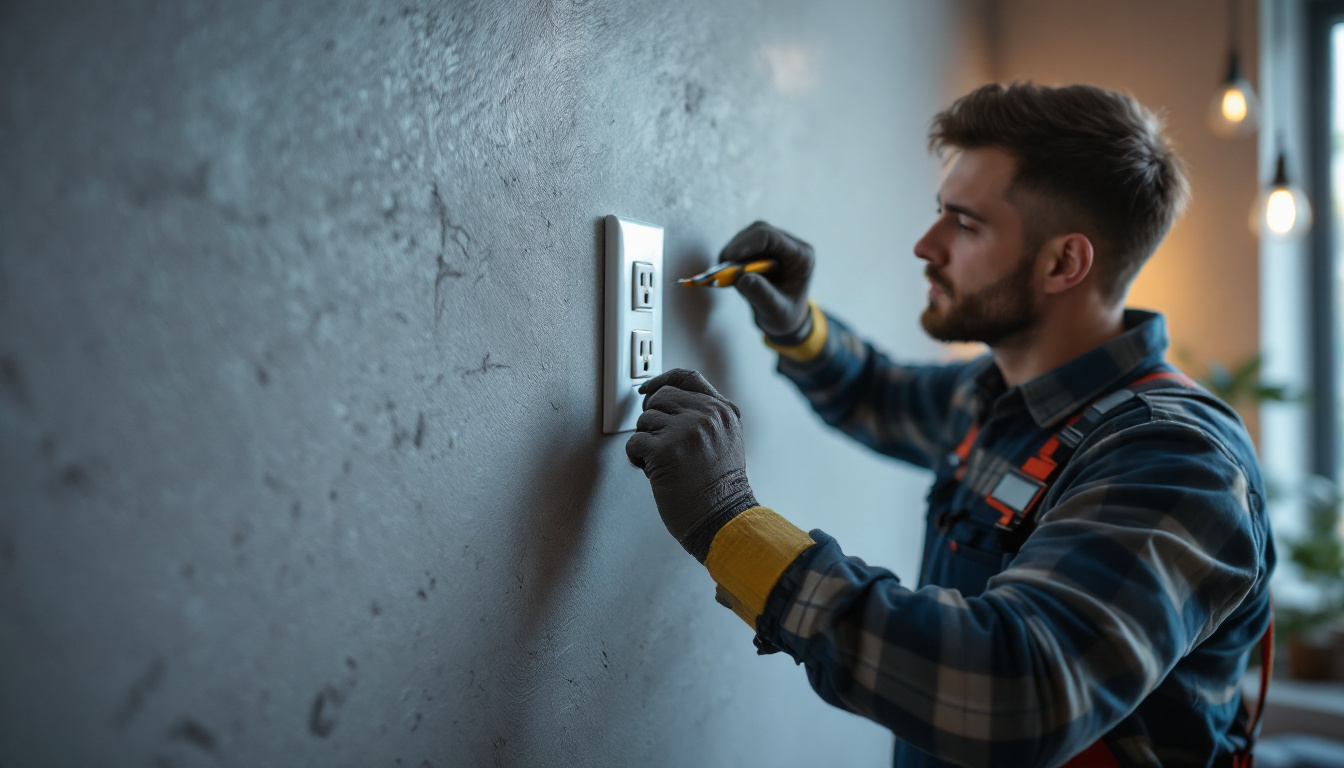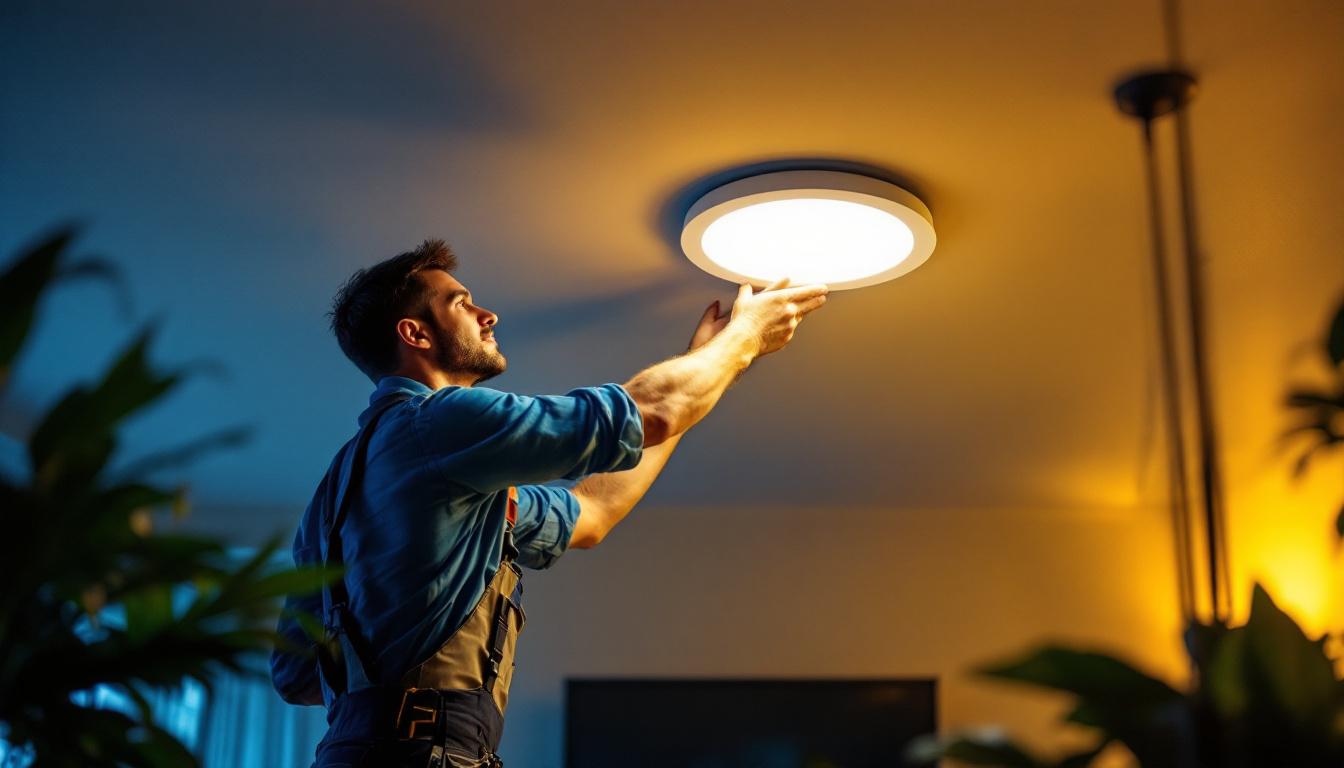
In the world of electrical work, lighting contractors play a crucial role in ensuring that spaces are illuminated safely and effectively. Among the many components that contribute to successful lighting installations, outlets and light switches are fundamental elements that can significantly impact both functionality and aesthetics. Understanding how to maximize the effectiveness of these components is essential for lighting contractors aiming to enhance their service offerings and client satisfaction.
Outlets are not merely functional components; they are integral to the overall design and usability of a space. Properly placed outlets can enhance the convenience of lighting fixtures and other electrical devices, while poorly positioned outlets can lead to frustration and inefficiency.
When planning the layout of outlets, consider the intended use of each space. In residential settings, outlets should be placed in locations that accommodate lamps, decorative lighting, and other electrical devices. For instance, in living rooms, outlets should be positioned near seating areas to allow for easy access to power sources.
In commercial spaces, the placement of outlets can be even more critical. Offices, conference rooms, and retail environments often require multiple outlets to support various lighting needs and electronic devices. Conducting a thorough assessment of the space before installation can help identify optimal outlet locations, ensuring that the lighting design is both functional and aesthetically pleasing. Additionally, integrating outlets into architectural features, such as baseboards or wall panels, can create a seamless look while maintaining accessibility. This thoughtful approach not only enhances the visual appeal but also maximizes the utility of the space, allowing for a more dynamic use of lighting and technology.
There are several types of outlets that lighting contractors should be familiar with, each serving different purposes. Standard duplex outlets are the most common, but specialized outlets like GFCI (Ground Fault Circuit Interrupter) and AFCI (Arc Fault Circuit Interrupter) are essential for specific environments, particularly in areas prone to moisture or electrical hazards.
In addition to safety considerations, contractors should also explore the use of smart outlets. These outlets enable remote control of lighting systems and can be integrated with home automation systems, providing added convenience and energy efficiency for clients. Furthermore, as technology continues to evolve, the incorporation of USB outlets has become increasingly popular, allowing for direct charging of devices without the need for bulky adapters. This modern convenience not only enhances user experience but also reflects a forward-thinking approach to design that meets the demands of today’s tech-savvy consumers. By considering these diverse outlet options, designers can create spaces that are not only functional but also adaptable to future needs.
Light switches are the primary means by which users control their lighting. The design and functionality of light switches can greatly influence the user experience and the overall effectiveness of a lighting system.
There are various types of light switches available, each offering unique features. Traditional toggle switches are simple and reliable, while dimmer switches provide flexibility in adjusting brightness levels. For modern homes and businesses, smart switches can offer enhanced control through mobile apps and voice commands.
When selecting switches, consider the needs of the client and the specific lighting design. For example, dimmer switches are ideal for spaces where ambiance is key, such as dining areas or theaters. On the other hand, standard switches may suffice in areas requiring straightforward on/off functionality. Additionally, consider the integration of motion sensors in certain areas, such as hallways or bathrooms, where automatic lighting can enhance convenience and energy efficiency.
The aesthetic aspect of light switches should not be overlooked. They come in various styles, colors, and finishes, allowing contractors to match them with the overall design theme of a space. A well-chosen switch can complement the decor and enhance the visual appeal of a room.
Moreover, the placement of light switches is vital for user convenience. They should be easily accessible and positioned at a height that accommodates all users. In larger spaces, consider installing multiple switches to control different lighting zones, allowing for greater flexibility in lighting design. Furthermore, incorporating decorative switch plates can add an additional layer of style, transforming a functional element into a design feature. Options range from sleek, minimalist designs to ornate, vintage-inspired styles, catering to diverse tastes and interior aesthetics.
In addition to visual appeal, the tactile experience of using a light switch is equally important. The feel of the switch, whether it’s a soft-touch dimmer or a robust toggle, can influence user satisfaction. Some manufacturers even offer customizable switches that allow users to choose the texture and finish, ensuring that the switch not only functions well but also feels right in the hand. This attention to detail can significantly enhance the overall lighting experience, making the act of switching on and off a more enjoyable part of daily life.
The rise of smart home technology has transformed the way lighting contractors approach outlet and switch installations. Integrating outlets and switches into smart lighting systems can provide clients with enhanced control and energy efficiency.
Smart lighting systems allow users to control their lights remotely, schedule lighting to match their routines, and even adjust settings based on occupancy. This level of control not only enhances convenience but can also lead to significant energy savings. For instance, homeowners can program their lights to turn off automatically when they leave the house or dim during movie nights, creating the perfect ambiance while reducing energy consumption.
Moreover, smart lighting systems can be integrated with other smart home devices, such as security systems and smart thermostats, creating a cohesive and automated home environment. This interconnectedness means that when a homeowner activates their security system, the lights can automatically turn off or switch to a low-light mode, enhancing security while saving energy. For contractors, offering smart outlet and switch options can set them apart from competitors. It demonstrates a commitment to staying current with technology trends and meeting the evolving needs of clients.
When installing smart outlets and switches, it is crucial to ensure compatibility with existing electrical systems. Contractors should familiarize themselves with the specific requirements of each smart device, including Wi-Fi connectivity and power needs. Additionally, understanding the range of smart home ecosystems available—such as Google Home, Amazon Alexa, and Apple HomeKit—can help contractors recommend the best solutions tailored to their clients’ preferences.
Furthermore, considering the physical placement of smart outlets and switches is essential for optimal functionality. For example, placing smart switches in high-traffic areas can facilitate easy access and control, while strategically positioned smart outlets can accommodate various devices without clutter. Additionally, educating clients on the benefits and functionalities of smart devices can enhance their overall experience. Providing guidance on how to use these systems effectively can lead to higher satisfaction and potential referrals. Offering post-installation support, such as troubleshooting or updates, can further solidify a contractor’s reputation as a knowledgeable and reliable service provider in the smart home market.
Safety should always be a top priority for lighting contractors. Adhering to electrical codes and safety standards is essential to ensure that installations are safe and compliant.
Electrical codes vary by region, but they generally include guidelines for the installation of outlets and switches. Familiarizing oneself with these codes is vital for ensuring that installations meet legal requirements and safety standards.
Contractors should also stay updated on any changes to electrical codes, as these can impact installation practices and safety measures. Regular training and education can help contractors remain compliant and knowledgeable.
In addition to following electrical codes, implementing safety measures during installation is crucial. This includes using appropriate personal protective equipment (PPE), ensuring that power is turned off before work begins, and double-checking connections for safety.
Moreover, educating clients about the importance of regular maintenance and inspections can help prevent electrical hazards in the long term. Providing clients with information on how to identify potential issues can foster trust and establish the contractor as a knowledgeable expert in the field.
Building strong relationships with clients is essential for the long-term success of lighting contractors. Providing quality service and maintaining open communication can lead to repeat business and referrals.
Clear communication is key to understanding client needs and expectations. During initial consultations, contractors should take the time to listen to clients and ask questions to gain a comprehensive understanding of their lighting goals.
Regular updates throughout the installation process can also keep clients informed and engaged. Transparency regarding timelines, costs, and any potential challenges can help manage expectations and build trust.
Offering post-installation support can further enhance client satisfaction. Providing clients with information on how to operate their new lighting systems, as well as maintenance tips, can demonstrate a commitment to their long-term satisfaction.
Encouraging clients to reach out with any questions or concerns after the installation can foster a sense of reliability and support. This can lead to positive reviews and referrals, which are invaluable for the growth of a lighting contractor’s business.
Maximizing success as a lighting contractor involves a comprehensive understanding of the roles that outlets and light switches play in lighting design. By strategically placing outlets, selecting the right types of switches, and integrating smart technology, contractors can enhance the functionality and appeal of their installations.
Moreover, prioritizing safety, compliance, and client relationships can set contractors apart in a competitive market. By providing quality service and maintaining open communication, lighting contractors can build lasting relationships with clients, leading to continued success in their field.
Ultimately, the combination of technical expertise, attention to detail, and a commitment to client satisfaction will pave the way for a thriving career in the lighting industry.
Ready to elevate your lighting installations with the finest products on the market? Look no further than LumenWholesale for a vast selection of spec-grade lighting essentials. Our commitment to quality and affordability ensures that you have access to the best lighting products at wholesale prices, giving you the competitive edge you need. Say goodbye to middleman markups and hello to hassle-free bulk purchasing with free shipping. Don’t compromise on quality or cost. Make the smart choice and shop at LumenWholesale today for lighting solutions that truly shine.

Discover how barn lights can illuminate new business opportunities for lighting contractors.

Discover how lighting contractors can enhance their projects and boost efficiency with retrofit LED recessed lights.

Explore how dusk till dawn exterior lights are revolutionizing the work of lighting contractors by offering seamless, energy-efficient solutions.

Discover how to enhance visibility and reduce energy costs with LED lighting for outdoor signs.